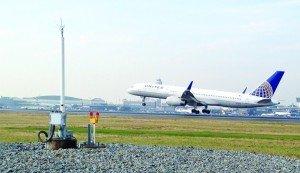
Practice makes precision
Avionics expert and OHIO professor Frank van Graas, PHD ’88, recalls his favorite test flight when birthing a milestone tracking instrument.—Amy Nordrum
Scientists understand the importance of replication. Indeed, they rely on it. Just ask Frank van Graas of OHIO’s Avionics Engineering Center. Some 30 years ago, he spent an exhilarating weekend trying a new technology known as a Ground Based Augmentation System (GBAS), which gives pilots a more accurate global positioning system signal during landing.

Van Graas, Russ Professor of Electrical Engineering and Computer Science, rented a Boeing 757 from UPS in the project’s early stages. His team drove to Louisville, Kentucky, on a Friday afternoon to pick up the plane and worked late into the night to install the system. Then they flew to Atlantic City, New Jersey, and conducted 50 landings in a row from Saturday afternoon through Sunday morning to gauge its performance.
They landed back in Louisville on Sunday and unbolted the GBAS equipment while taxiing to the terminal, returning the plane just in time.
The long hours paid off. Major changes in aviation often take decades to evaluate and gain acceptance. GBAS has since been installed at two U.S. international airports and is gaining popularity with leading airlines.
The Bobcat predicts that GBAS eventually will be used to land unmanned aircraft automatically. In fact, van Graas collaborated with NASA to guide a Boeing 737 through a fully automated landing via GBAS more than 20 years ago. In the coming year, he hopes to finish tests that will permit commercial pilots to apply GBAS for the same purpose.





